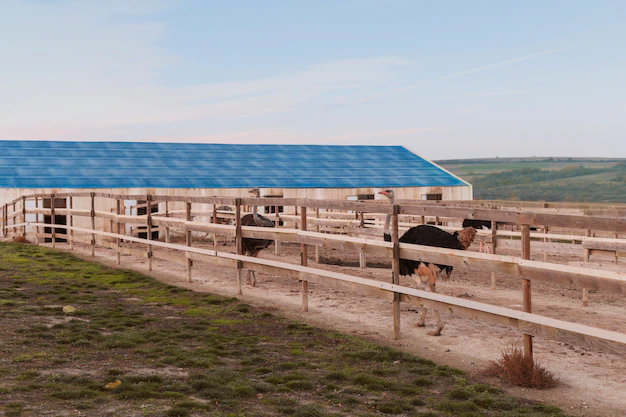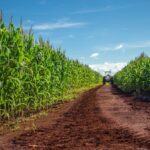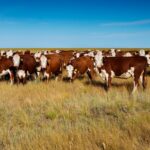Selecting the right livestock housing and fencing systems for your farm is crucial to ensure the well-being and safety of your animals. Here are some steps to help you make informed decisions:
- Assess your needs: Determine the specific requirements of your livestock. Consider factors such as the type and number of animals you have, their size, behavior, and environmental needs. This will help you understand the type of housing and fencing that will be suitable.
- Understand local regulations: Familiarize yourself with any local regulations or zoning requirements related to livestock housing and fencing. Some areas have specific rules regarding minimum space requirements, building codes, and fence heights. Make sure to comply with these regulations to avoid any legal issues.
- Determine your budget: Set a realistic budget for your housing and fencing systems. Consider the costs associated with construction, maintenance, and any additional features or materials you might need. This will help you narrow down your options and make cost-effective choices.
- Evaluate housing options: There are various housing systems available, such as barns, sheds, open-air structures, or individual stalls. Consider the climate, ventilation, insulation, and feeding requirements of your animals. Optimal housing should provide protection from extreme weather conditions, adequate space, proper lighting, and good ventilation.
- Consider fencing options: Select fencing systems based on the size and behavior of your livestock. Determine the purpose of the fence (e.g., keeping animals in, predators out, or separating different animal groups). Common fencing materials include wood, wire mesh, electric, or woven wire. Evaluate their durability, maintenance requirements, and cost-effectiveness.
- Prioritize safety: Ensure that your chosen housing and fencing systems provide a secure and safe environment for your animals. Eliminate any potential hazards or sharp edges that could cause injuries. Regularly inspect and maintain the structures to keep them in good condition and avoid accidents.
- Seek expert advice: Consult with experienced farmers, agricultural extension offices, or professionals in the field of animal husbandry to gather valuable insights and recommendations. They can provide guidance based on their knowledge and experience, helping you make informed decisions.
- Test and adapt: Start with a smaller-scale implementation of your chosen housing and fencing systems to evaluate their effectiveness. Monitor how well they meet the needs of your livestock and make necessary adjustments or improvements based on your observations.
Remember, the specific requirements for livestock housing and fencing systems may vary depending on your location, climate, and the type of animals you raise. Taking the time to plan and choose the right systems for your farm will contribute to the overall success and well-being of your livestock.
Join 'Farmers Mag' WhatsApp Channel
Get the latest Farming news and tips delivered straight to your WhatsApp
CLICK HERE TO JOIN






